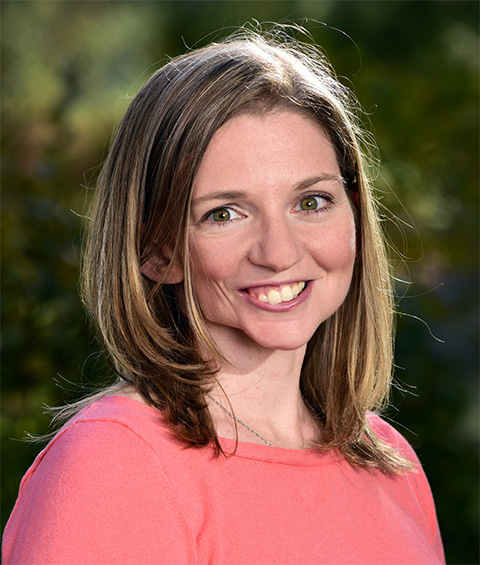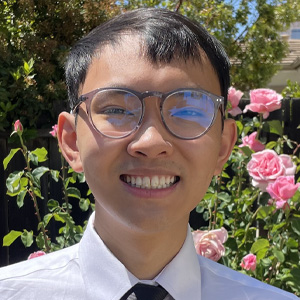Scientist channels personal experience into passion for RNA research
Interest in science can manifest itself in many ways. From being inspired by famous discoveries or by the people in one’s life to being curious about the natural world, there are various factors that can motivate someone to pursue a career in science.
For Cassandra Hayne, her interests in science started when she was young. Early on, Hayne wanted to be an entomologist, an expert in the branch of zoology that focuses on insects, like her mother. Hayne loved to volunteer and accompany her mother as she would teach people about insects and science. However, Hayne’s interests had a change of course as she contended with the realities of being a childhood cancer survivor. At the age of 2, Hayne was diagnosed with a type of rare pediatric cancer, and her experience with cancer led her career ambitions to change over time. Hayne decided she wanted to focus on biomedical research and to get further involved with cancer research, when she was older, after working with her oncologist one summer in high school.

“I grew up having science around me but what really made me want to be a scientist was my experience with cancer,” said Hayne, who is an assistant professor in the Department of Biochemistry and Molecular Biology at the University of Chicago.
Although cancer biology is not what she is currently studying, her early zeal for the world of biology has fueled her passion for biochemistry and her current research, which aims at reducing disease burden on children. As a postdoctoral scholar at the National Institute of Environmental Health Sciences, Hayne focused on characterizing the structure and function of RNA processing factors that are critical for proper translation.
As our cells go through transcription, the act of converting DNA into RNA, the resulting RNA needs to be processed before it leaves the nucleus, like how a child needs to learn how to be responsible before moving out. Insufficient preparation in both scenarios can have consequences.
A common processing step for many types of RNAs is splicing, or removal of certain elements of an RNA transcript. For transfer RNA (tRNA), clover-shaped adapter molecules essential for protein synthesis, certain elements need to be removed for proper formation of a shape that contributes to its function. In multicellular organisms like humans, tRNA splicing is carried out by the tRNA splicing (TSEN) complex, which consists of four proteins. Notably, mutations affecting any of the four proteins can result in pontocerebellar hypoplasia (PCH), a family of neurodegenerative disorders which includes symptoms such as microcephaly, locomotive dysfunction and developmental delay.
The molecular mechanisms responsible for the development of PCH and how the TSEN complex orchestrates its activities by each member to achieve splicing is still poorly understood. Do mutations in the TSEN complex proteins disrupt how it cuts or binds to RNA? Or do mutations impact other aspects of how the complex survives or is controlled in cells?
Before arriving at the University of Chicago, Hayne took a big step in answering questions surrounding the TSEN complex by utilizing Cryo-Electron Microscopy (cryo-EM) to view the complex at near atomic resolution. Not only were these the first cryo-EM structures of the human TSEN complex, but Hayne and her collaborators also conducted a portion of this research during the COVID-19 pandemic and at a time when the TSEN complex was considered too small for cryo-EM.
“The things people generally go after [with cryo-EM] are large complexes or those made up of the same building blocks… the TSEN complex is neither of those,” she said.
Along with further characterizing proteins of the complex, these cryo-EM structures will inform future studies and provide insight into how certain mutations contribute to PCH and the molecular mechanisms involved in eukaryotic tRNA splicing.
Advancing science in a translational way
Toward the goal of understanding RNA processing and its impacts on cellular function, Hayne recently opened her lab at the University of Chicago. Since there are many processing steps that RNA needs to go through that are non-splicing related, the lab is excited to study the fundamental mechanisms of other RNA processing proteins and how certain mutations can disrupt normal functions, thereby impacting RNA processing, leading to diseases.
“We need to understand very basic principles of biology because those principles are frequently used to advance science in a translational way,” she said.
Hayne’s early curiosity in science has come full circle, as she is now looking for students of her own to mentor in her lab. While she did not end up pursuing her early dreams of becoming an entomologist like her mom or doing oncology research to change how childhood cancers are treated, Hayne is still following in her mother’s footsteps by inspiring a new generation of scientists, as she plans to share her passion for science with others in the Chicago area and grow a robust research program she hopes will have a lasting impact.
This article was first published by the University of Chicago Division of Biological Sciences. Read the original.
Enjoy reading ASBMB Today?
Become a member to receive the print edition four times a year and the digital edition monthly.
Learn moreGet the latest from ASBMB Today
Enter your email address, and we’ll send you a weekly email with recent articles, interviews and more.
Latest in People
People highlights or most popular articles

In memoriam: Michael J. Chamberlin
He discovered RNA polymerase and was an ASBMB member for nearly 60 years.

Building the blueprint to block HIV
Wesley Sundquist will present his work on the HIV capsid and revolutionary drug, Lenacapavir, at the ASBMB Annual Meeting, March 7–10, in Maryland.

In memoriam: Alan G. Goodridge
He made pioneering discoveries on lipid metabolism and was an ASBMB member since 1971.

Alrubaye wins research and teaching awards
He was honored at the NACTA 2025 conference for the Educator Award and at the U of A State and National Awards reception for the Faculty Gold Medal.

Designing life’s building blocks with AI
Tanja Kortemme, a professor at the University of California, San Francisco, will discuss her research using computational biology to engineer proteins at the 2026 ASBMB Annual Meeting.

Jordahl named Gilliam Fellow
He will receive three years of funding to support his thesis research.

